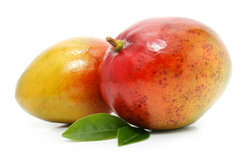The mango poisonous?
Are Mangoes Really Poisonous? This apparently so healthy national fruit of the Indians is healthy. Or not? In any case, part of humanity should be a bit careful when eating this fruit.

The mango is so poisonous
The mango tree (Mangifera indica) took root in India. The tree was discovered around 4,000 BC.
- The tree grows up to about forty meters high. The width can be ten meters at the crown and supports several tons of mango. Really everything can be recycled. Starting with the leaves, which can be cooked, and the cattle are also very fond of the mango. But the question often arises as to whether the fruit is poisonous or not.
- In any case, this national fruit of the Indians is a radical scavenger and a pure provitamin A bomb. Traditional Indian medicine uses it to strengthen the heart and can also be used to stop bleeding. It even stimulates brain activity. And such a great fruit is supposed to be poisonous?
- No she is not. Doctors still advise caution. Because the peel of the fruit, the flowers and leaves do indeed contain a toxin that can cause allergic reactions.
- Although it was classified as endangered in 1997 because of the poison, it was deleted from the so-called Red List of Threatened Species (International Union for Conservation of Nature - IUCN) due to insufficient data.
- The national fruit of India belongs to the so-called sumac family. These include pistachio and cashew trees as well as poison ivy. As a rule, however, one can only have an allergic reaction with contact with the shell.
Red berries: Distinguish poisonous from edible
Many red berries are poisonous. It is therefore important to warn children against consumption. The …
Otherwise, this fruit is as healthy as no other.
How to recognize a ripe fruit
The mango is basically not poisonous. But basically you have an allergic reaction Groceries, caution is always required.
- Do not store the mango in the refrigerator, but at room temperature. If the temperature is too low, the skin will be damaged. It is also possible that the fruit will dry out.
- The fruit is harvested immature. You can recognize the ripeness above all by the scent and the ever softening skin.
- If the fruit is not yet ripe, you can tell by the black dots on the skin. The best temperature for storage is around 20 to 25 degrees Celsius. The temperature fluctuations do not make the fruit poisonous. The substance is in the flowers, leaves and shell.
- If you store the fruit together with an apple, it will ripen faster. This is due to the ethylene gas in the apple. This gas stimulates the ripening process. All you need to do is wrap the fruit and the apple in newspaper.
Summary: The scent of the fruit is a clear indication of ripeness. The skin should be slightly leathery and give when you apply light pressure.
How helpful do you find this article?


